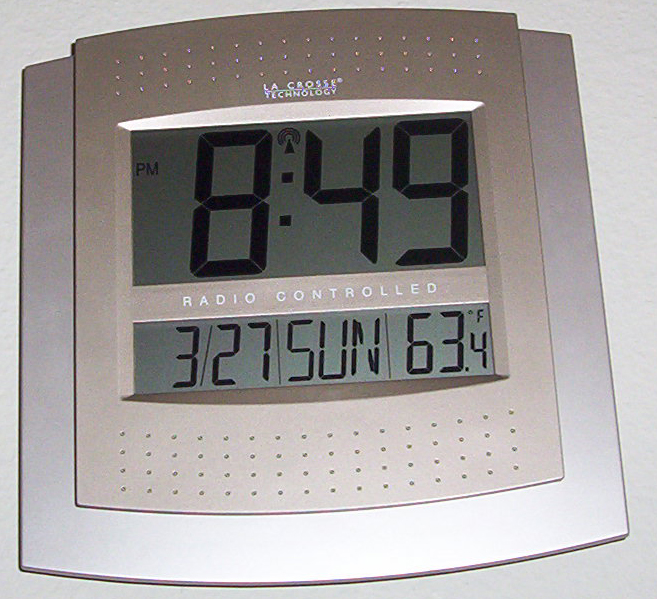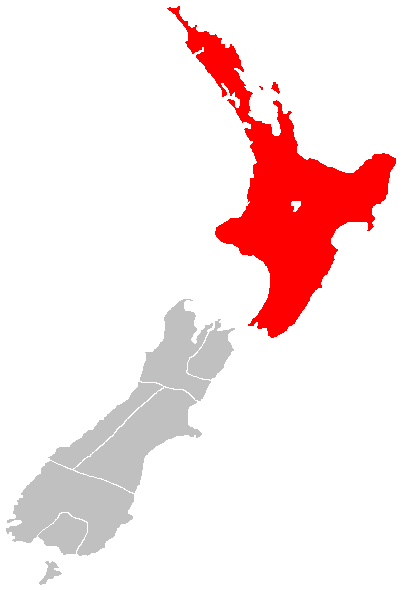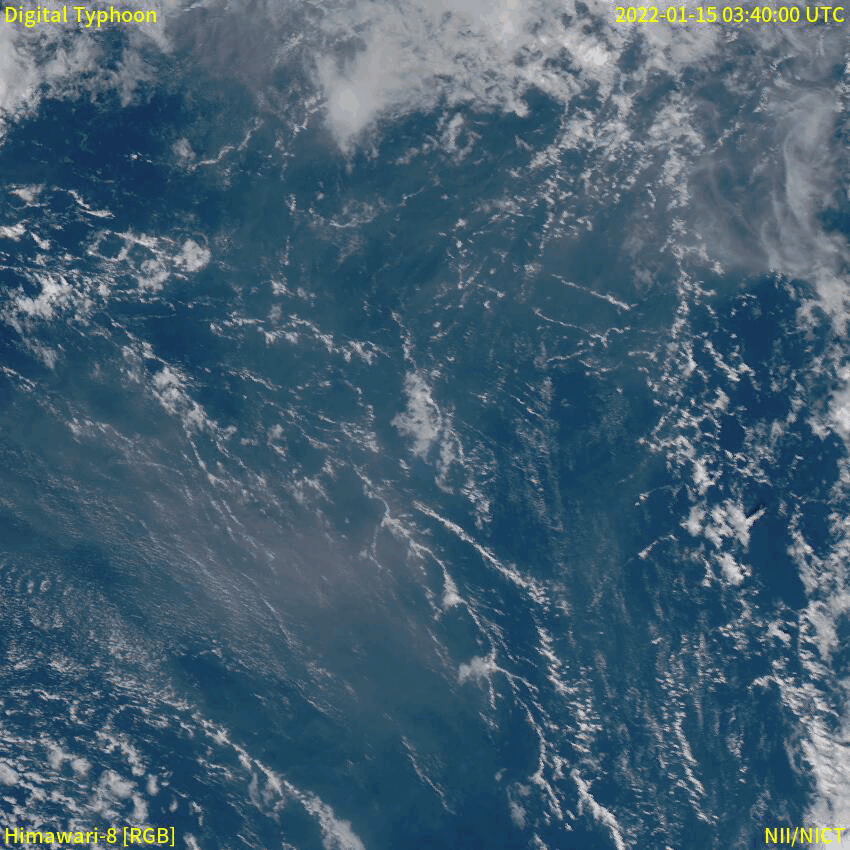|
White Island Eruption
On 9 December 2019 Whakaari / White Island, an active stratovolcano island in New Zealand's northeastern Bay of Plenty region explosively erupted. The island was a popular tourist destination, known for its volcanic activity, and 47 people were on the island at the time. Twenty-two people died, either in the explosion or from injuries sustained, including two whose bodies were never found and were later declared dead. A further 25 people suffered injuries, with the majority needing intensive care for severe burns. The ongoing seismic and volcanic activity in the area as well as heavy rainfall, low visibility and toxic gases hampered recovery efforts over the week following the incident. Experts identified the event as a phreatic eruption: a release of steam and volcanic gases that caused an explosion, launching rock and ash into the air. Following the eruption, investigations resulted in WorkSafe New Zealand charging multiple tour operators, government and scientific agencies ... [...More Info...] [...Related Items...] OR: [Wikipedia] [Google] [Baidu] |
NZDT
Time in New Zealand is divided by law into two standard time zones. The main islands use New Zealand Standard Time (NZST), 12 hours in advance of Coordinated Universal Time (UTC) / military M (Mike), while the outlying Chatham Islands use Chatham Standard Time (CHAST), 12 hours 45 minutes in advance of UTC / military M^ (Mike-Three). During summer months – from the last Sunday in September until the first Sunday in April – daylight saving time is observed and clocks are advanced one hour. New Zealand Daylight Time (NZDT) is 13 hours ahead of UTC, and Chatham Daylight Time (CHADT) 13 hours 45 minutes ahead. New Zealand's associated states – the Cook Islands and Niue – and the dependent territory of Tokelau use several different time zones at their own discretion. History On 2 November 1868, New Zealand officially adopted a standard time to be observed nationally, and was the first country to do so, about fifteen years before any other. Chatham Island was 45 minutes ah ... [...More Info...] [...Related Items...] OR: [Wikipedia] [Google] [Baidu] |
North Island
The North Island, also officially named Te Ika-a-Māui, is one of the two main islands of New Zealand, separated from the larger but much less populous South Island by the Cook Strait. The island's area is , making it the world's 14th-largest island. The world's 28th-most-populous island, Te Ika-a-Māui has a population of accounting for approximately % of the total residents of New Zealand. Twelve main urban areas (half of them officially cities) are in the North Island. From north to south, they are Whangārei, Auckland, Hamilton, Tauranga, Rotorua, Gisborne, New Plymouth, Napier, Hastings, Whanganui, Palmerston North, and New Zealand's capital city Wellington, which is located at the south-west tip of the island. Naming and usage Although the island has been known as the North Island for many years, in 2009 the New Zealand Geographic Board found that, along with the South Island, the North Island had no official name. After a public consultation, the board offi ... [...More Info...] [...Related Items...] OR: [Wikipedia] [Google] [Baidu] |
Eruption Column
An eruption column or eruption plume is a cloud of super-heated ash and tephra suspended in gases emitted during an explosive volcanic eruption. The volcanic materials form a vertical column or plume that may rise many kilometers into the air above the vent of the volcano. In the most explosive eruptions, the eruption column may rise over , penetrating the stratosphere. Stratospheric injection of aerosols by volcanoes is a major cause of short-term climate change. A common occurrence in explosive eruptions is ''column collapse'' when the eruption column is or becomes too dense to be lifted high into the sky by air convection, and instead falls down the slopes of the volcano to form pyroclastic flows or surges (although the latter is less dense). On some occasions, if the material is not dense enough to fall, it may create pyrocumulonimbus clouds. Formation Eruption columns form in explosive volcanic activity, when the high concentration of volatile materials in the risin ... [...More Info...] [...Related Items...] OR: [Wikipedia] [Google] [Baidu] |
White Island Crater Rim Webcam 9 December 2019
White is the lightest color and is achromatic (having no hue). It is the color of objects such as snow, chalk, and milk, and is the opposite of black. White objects fully reflect and scatter all the visible wavelengths of light. White on television and computer screens is created by a mixture of red, blue, and green light. The color white can be given with white pigments, especially titanium dioxide. In ancient Egypt and ancient Rome, priestesses wore white as a symbol of purity, and Romans wore white togas as symbols of citizenship. In the Middle Ages and Renaissance a white unicorn symbolized chastity, and a white lamb sacrifice and purity. It was the royal color of the kings of France, and of the monarchist movement that opposed the Bolsheviks during the Russian Civil War (1917–1922). Greek and Roman temples were faced with white marble, and beginning in the 18th century, with the advent of neoclassical architecture, white became the most common color of new churches ... [...More Info...] [...Related Items...] OR: [Wikipedia] [Google] [Baidu] |
Deformation Monitoring
Deformation monitoring (also referred to as deformation survey) is the systematic measurement and tracking of the alteration in the shape or dimensions of an object as a result of stresses induced by applied loads. Deformation monitoring is a major component of logging measured values that may be used for further computation, deformation analysis, predictive maintenance and alarming. Deformation monitoring is primarily related to the field of applied surveying, but may also be related to civil engineering, mechanical engineering, construction, and geology. The measuring devices used for deformation monitoring depend on the application, the chosen method, and the preferred measurement interval. Measuring devices Measuring devices (or sensors) can be sorted in two main groups—geodetic and geotechnical sensors. Both measuring devices can be seamlessly combined in modern deformation monitoring. *Geodetic measuring devices measure georeferenced (relative to established location ... [...More Info...] [...Related Items...] OR: [Wikipedia] [Google] [Baidu] |
Seismometer
A seismometer is an instrument that responds to ground noises and shaking such as caused by earthquakes, volcanic eruptions, and explosions. They are usually combined with a timing device and a recording device to form a seismograph. The output of such a device—formerly recorded on paper (see picture) or film, now recorded and processed digitally—is a seismogram. Such data is used to locate and characterize earthquakes, and to study the Earth's internal structure. Basic principles A simple seismometer, sensitive to up-down motions of the Earth, is like a weight hanging from a spring, both suspended from a frame that moves along with any motion detected. The relative motion between the weight (called the mass) and the frame provides a measurement of the vertical ground motion. A rotating drum is attached to the frame and a pen is attached to the weight, thus recording any ground motion in a seismogram. Any movement from the ground moves the frame. The mass tends not ... [...More Info...] [...Related Items...] OR: [Wikipedia] [Google] [Baidu] |
GNS Science
GNS Science ( mi, Te Pū Ao), officially registered as the Institute of Geological and Nuclear Sciences Limited, is a New Zealand Crown Research Institute. It focuses on geology, geophysics (including seismology and volcanology), and nuclear science (particularly ion-beam technologies, isotope science and carbon dating). GNS Science was known as the Institute of Geological and Nuclear Sciences (IGNS) from 1992 to 2005. Originally part of the New Zealand Government's Department of Scientific and Industrial Research (DSIR), it was established as an independent organisation when the Crown Research Institutes were set up in 1992. Crown Research Institutes Act 1992. As well as undertaking basic research, and operating the national geological hazards monitoring network (GeoNet) [...More Info...] [...Related Items...] OR: [Wikipedia] [Google] [Baidu] |
Hydrothermal Explosion
Hydrothermal explosions occur when superheated water trapped below the surface of the earth rapidly converts from liquid to steam, violently disrupting the confining rock. Boiling water, steam, mud, and rock fragments are ejected over an area of a few meters up to several kilometers in diameter. Although the energy originally comes from a deep igneous source, this energy is transferred to the surface by circulating meteoric water or mixtures of meteoric and magmatic water rather than by magma, as occurs in volcanic eruptions. The energy is stored as heat in hot water and rock within a few hundred feet of the surface. Hydrothermal explosions are caused by the same instability and chain reaction mechanism as geysers but are so violent that rocks and mud are expelled along with water and steam. Cause Hydrothermal explosions occur where shallow interconnected reservoirs of water at temperatures as high as 250° Celsius underlie thermal fields. Water usually boils at 100 °C, bu ... [...More Info...] [...Related Items...] OR: [Wikipedia] [Google] [Baidu] |
Christchurch
Christchurch ( ; mi, Ōtautahi) is the largest city in the South Island of New Zealand and the seat of the Canterbury Region. Christchurch lies on the South Island's east coast, just north of Banks Peninsula on Pegasus Bay. The Avon River / Ōtākaro flows through the centre of the city, with an urban park along its banks. The city's territorial authority population is people, and includes a number of smaller urban areas as well as rural areas. The population of the urban area is people. Christchurch is the second-largest city by urban area population in New Zealand, after Auckland. It is the major urban area of an emerging sub-region known informally as Greater Christchurch. Notable smaller urban areas within this sub-region include Rangiora and Kaiapoi in Waimakariri District, north of the Waimakariri River, and Rolleston and Lincoln in Selwyn District to the south. The first inhabitants migrated to the area sometime between 1000 and 1250 AD. They hunted moa, ... [...More Info...] [...Related Items...] OR: [Wikipedia] [Google] [Baidu] |
Epicenter
The epicenter, epicentre () or epicentrum in seismology is the point on the Earth's surface directly above a hypocenter or focus, the point where an earthquake or an underground explosion originates. Surface damage Before the instrumental period of earthquake observation, the epicenter was thought to be the location where the greatest damage occurred, but the subsurface fault rupture may be long and spread surface damage across the entire rupture zone. As an example, in the magnitude 7.9 Denali earthquake of 2002 in Alaska, the epicenter was at the western end of the rupture, but the greatest damage was about away at the eastern end. Focal depths of earthquakes occurring in continental crust mostly range from . Continental earthquakes below are rare whereas in subduction zone earthquakes can originate at depths deeper than . Epicentral distance During an earthquake, seismic waves propagate in all directions from the hypocenter. Seismic shadowing occurs on the opposite ... [...More Info...] [...Related Items...] OR: [Wikipedia] [Google] [Baidu] |
Earthquake
An earthquake (also known as a quake, tremor or temblor) is the shaking of the surface of the Earth resulting from a sudden release of energy in the Earth's lithosphere that creates seismic waves. Earthquakes can range in intensity, from those that are so weak that they cannot be felt, to those violent enough to propel objects and people into the air, damage critical infrastructure, and wreak destruction across entire cities. The seismic activity of an area is the frequency, type, and size of earthquakes experienced over a particular time period. The seismicity at a particular location in the Earth is the average rate of seismic energy release per unit volume. The word ''tremor'' is also used for Episodic tremor and slip, non-earthquake seismic rumbling. At the Earth's surface, earthquakes manifest themselves by shaking and displacing or disrupting the ground. When the epicenter of a large earthquake is located offshore, the seabed may be displaced sufficiently to cause ... [...More Info...] [...Related Items...] OR: [Wikipedia] [Google] [Baidu] |
Moment Magnitude Scale
The moment magnitude scale (MMS; denoted explicitly with or Mw, and generally implied with use of a single M for magnitude) is a measure of an earthquake's magnitude ("size" or strength) based on its seismic moment. It was defined in a 1979 paper by Thomas C. Hanks and Hiroo Kanamori. Similar to the local magnitude/Richter scale () defined by Charles Francis Richter in 1935, it uses a logarithmic scale; small earthquakes have approximately the same magnitudes on both scales. Despite the difference, news media often says "Richter scale" when referring to the moment magnitude scale. Moment magnitude () is considered the authoritative magnitude scale for ranking earthquakes by size. It is more directly related to the energy of an earthquake than other scales, and does not saturate—that is, it does not underestimate magnitudes as other scales do in certain conditions. It has become the standard scale used by seismological authorities like the U.S. Geological SurveyThe "USGS Ea ... [...More Info...] [...Related Items...] OR: [Wikipedia] [Google] [Baidu] |








